7 Common Presentation Mistakes—and How Great Design Fixes Them
7 Common Presentation Mistakes—and How Great Design Fixes Them
Even the most compelling ideas can fall flat when delivered through a poorly designed presentation. Whether you’re pitching a new product, leading a workshop, or presenting quarterly results, your slides play a crucial role in shaping how your message is received. Unfortunately, many presentations suffer from common design pitfalls that dilute the impact of the content.
At SodaPop Media, we specialize in creating custom presentation designs that don’t just look good—they communicate with purpose. Below are seven common mistakes we see in slide decks, along with how expert design can solve them.
1. Overloading Slides with Text
The Mistake:
Trying to say too much on one slide—especially using paragraphs of text—is a guaranteed way to lose your audience’s attention.
The Fix:
A professional designer will distill key points into digestible visual summaries using bullet points, typography hierarchy, and supporting visuals. The result: cleaner, more scannable slides that guide your audience through your message.
2. Inconsistent Branding and Style
The Mistake:
Slides that look like a mix of different fonts, colors, or logos give off a chaotic or unpolished vibe—especially in client-facing or investor decks.
The Fix:
A custom-designed presentation will reflect your brand’s identity with consistent use of color palettes, typography, and graphic elements. This builds credibility and keeps your brand top-of-mind throughout the presentation.
3. Low-Quality Images or Clip Art
The Mistake:
Grainy stock photos or outdated clip art instantly make your presentation feel amateur and distract from your core message.
The Fix:
A design pro sources high-resolution, on-brand visuals—or creates custom graphics—to support your narrative. This elevates your content visually and emotionally.
4. Lack of Visual Hierarchy
The Mistake:
Without clear structure, viewers struggle to know where to focus their attention. When everything is bold, nothing stands out.
The Fix:
Designers use layout, scale, and white space to create hierarchy. This helps your audience follow the story intuitively, making your message more impactful.
5. Unreadable Fonts or Poor Contrast
The Mistake:
Fancy fonts or pale text on a light background may look nice on your screen, but they’re hard to read—especially in a room or on a projector.
The Fix:
Professional presentation design ensures readability with thoughtful font choices and proper color contrast, balancing aesthetics with functionality.
6. Too Many Transitions and Animations
The Mistake:
It’s tempting to use flashy animations, but overdoing it can be distracting and slow down your presentation.
The Fix:
We apply animation and transitions strategically—to emphasize a key point or build suspense—not just for show. Subtle motion enhances flow without hijacking the audience’s focus.
7. Ignoring the Storytelling Flow
The Mistake:
A jumbled slide sequence, or slides that jump topics abruptly, can confuse your audience and hurt your message.
The Fix:
Our team works closely with clients to structure the presentation like a narrative: clear intro, logical build-up, and memorable close. Each slide becomes a stepping stone toward a cohesive story arc.
Why Presentation Design Matters More Than Ever
With hybrid events, virtual pitches, and growing competition for attention, the quality of your presentation is often the difference between “just okay” and truly memorable. A well-designed presentation helps you:
-
Communicate complex ideas clearly
-
Keep your audience engaged
-
Strengthen brand recognition
-
Inspire action
 Need Help With Your Next Presentation?
Need Help With Your Next Presentation?
SodaPop Media offers custom presentation design services tailored to your goals and brand. Whether you’re updating a sales deck, preparing for a big pitch, or need a fresh template for your team, we’ve got you covered.
👉 Explore our Presentation Design Services
👉 Or Contact Us to start your project today.
James Faulkner is SodaPop Media’s Content Manager and Creative Director.





